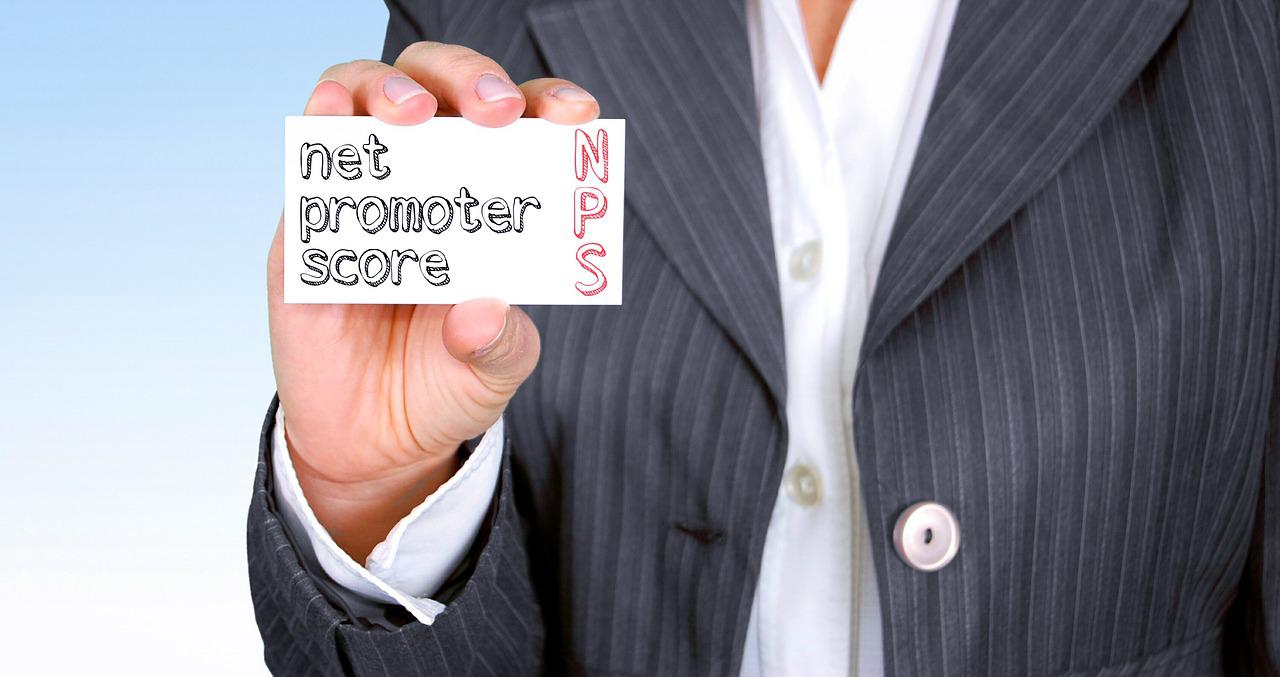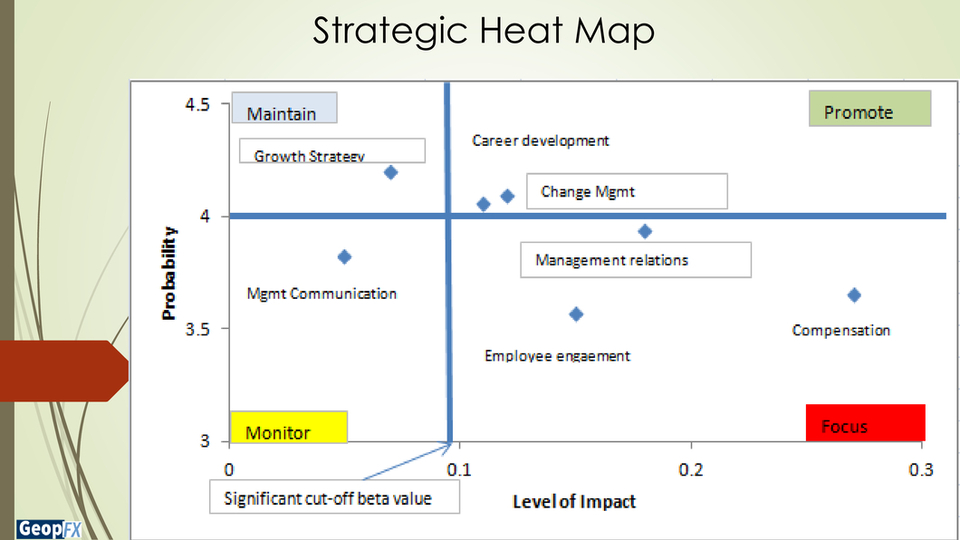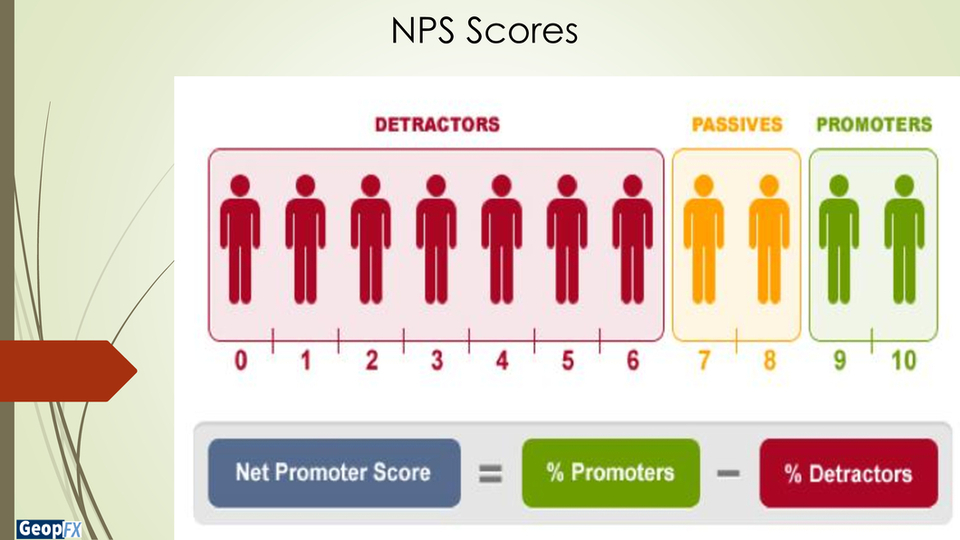
The Net Promotor Score (NPS) is a client satisfaction metric that asks if they are likely to recommend your product to others. NPS has grown in popularity and acceptance over the years in a variety of industries, particularly in corporate SaaS. Here, we’ll look at some of the most important parts of NPS and why they matter in HR technology decisions.
Net Promoter Score (NPS) & it’s relevance
Employee engagement, satisfaction, and commitment are not business results, but they can be a driver of them. HR analytics enables you to link the survey data you collect to crucial business outcomes, allowing you to focus your initiatives on the areas that matter most. The key questions to ask are:
1. On what outcomes/metrics are the senior leaders in this organization most focused?
2. Who owns the specific data/metrics that senior leaders are focused? How do I connect with those individuals to obtain the data?
3. Are the important business data/metrics collected at the appropriate level i.e. department level/organization level)?
4. Do I have the statistical capabilities in-house or do I need to look at a university or consulting firm to help me analyze the data?
5. Based on the linkage analysis, what is the highest priority/ROI project that I should execute first?
6. How do I assess the change that has occurred and make adjustments.
Case Study
Let’s look at a case study in the SaaS market, where individual customers and workers of the customer firm use software services on their own devices with their own personal usage account. The payment is made on a monthly basis by the firm to the service provider, rather than by the individual.
The NPS survey and score has evolved into a vital business metric with significant financial ramifications for businesses. NPS has proven to be a useful technique for understanding customers’ mood towards the firm, especially in the blooming start-up culture where customer-centricity and growth are the essential factors for the organization.
If, for example, a company needed to enhance its net promoter score (NPS) scores and saw its employees and customers as an opportunity. On a tactical level, qualitative and quantitative analysis, as well as the use of statistical methods, will aid in identifying and relating to the specific improvement head. On the people front, process and quality are two survey categories that have a major impact on NPS, whereas from the customer’s perspective, the customer journey experience, as well as customer loyalty, attitudes and behaviors, are quite important.
Strategic Survey Heat Map
First and foremost, making HR statistics available and actionable to front-line leaders will increase the organization’s influence. Each process leader receives an easy-to-understand heat map that emphasizes the most important actions based on cause-and-effect business impact. Heat Maps allow all leaders at all levels to quickly use analytics to prioritize exactly what needs to be addressed in order to effect results.

The heatmap’s vertical axis represents the percent favorable score (probability) for each of the survey’s categories. The horizontal axis depicts the degree to which each survey category influenced the business outcome. The vertical bolded line in the heatmap’s middle shows the cut-off point where the impact was considerable or not. To the right of the vertical bold line, every survey category had a major impact. To the left of the vertical bold line, every survey category had no meaningful impact.
The “Organization-wide overall average likelihood” for the entire organization is represented by the horizontal bold line, which can be established by convening a meeting with senior leaders to get their input. Strengths are any survey categories that are above the horizontal bold line. A developmental region is defined as any survey category that is below the horizontal line.
By providing the precise things that make up each of these survey categories, the Heat Map is designed to enable the leader become extremely detailed very quickly. Then he or she may see exactly where he or she should spend the most time.
Net Promoter Score Survey Scores

Customers fall into one of three groups based on their response: 0 (not at all probable) to 10 (very likely), and their NPS score is calculated as follows:
- Promoters respond with a score of 9 or 10 and are typically loyal and enthusiastic customers.
- Passives respond with a score of 7 or 8. They are satisfied with your service but not happy enough to be considered promoters.
- Detractors respond with a score of 0 to 6. These are unhappy customers who are unlikely to buy from you again, and may even discourage others from buying from you.
In comparison to the study of the following component of customer analytics, the people section is rather simple.
Based on their net promoter score survey scores, clients are divided into three distinct behavioral groups: promoters, passives, and detractors. When the corporations characterize the clients individually, they rely solely on a response to a single question scale. As a result, it is critical to comprehend the system on a micro level (an individual customer).
The majority of SaaS businesses are concerned about customer attrition. It’s frequently measured and displayed using indices like turnover rate. HR Analytics is used to identify customer traits prior to them churning out so that the correct levers can be pulled to keep them from cancelling their subscription.
The effectiveness of Net Promoter Score
NPS is designed to give a heads-up about dissatisfied customers. The effectiveness of NPS and its link to firm growth and profitability is well-documented, and it is the major outcome. ‘Performance antecedents produce loyal customers; loyal customers enable the business to translate into the event of high NPS; the event translates into consequences such as revenue growth and firm profitability,’ according to conventional wisdom.
On an individual basis, the rating is merely a predictor of consumer behavior such as word of mouth (WoM) and retention, all of which contribute to great revenues and growth.
The NPS phenomenon is analyzed on two levels, an individual respondent score level and the firm’s NPS level which is considered as two separate units of analysis.
On an individual level analysis, the purpose is to understand
- What factors build the attitude that manifests loyalty/ satisfaction with regards to the particular individual rating to the NPS survey
- How the attitude does in return translates into a particular behavior displayed by the customer?
On a Firm level analysis, the purpose is to understand
- Based on the understanding of individual sentiment, what are the factors as aggregate level of firm
- How does the NPS scores by market or product level?
An empirical exploration employing quantitative and qualitative data analysis, interviews, surveys, and other methods, as well as the pertinent ethical norms and considerations, is required to gain a fair and deep knowledge of these problems.
Understanding the interpretation and implementation of Net Promoter Score
In this case, the company is the unit of analysis in regard to its customers and industries. Because of its ease of implementation with largely digital interfaces, NPS has become a popular statistic in SaaS companies, prompting them to utilize it as a KPI and compare it to other companies. Individual interviews with relevant workers would provide a good insight of the company’s viewpoints.
This will provide some observations such as ease of interpretation, simplicity, customer pulse through text analytics, reliable scores for more stable product, frequency and many channels for NPS response, and so on. Responses from numerous users within a customer firm are not averaged to produce a customer sentiment aggregate.
Knowing how the Net Promoter Score survey relates to the customer journey
The unit of analysis in this is the individual customer. The aim is to map the customer journey comprising of interactions and events and see if and how it affects the customer’s sentiment towards the organization. The analytics would help to provide a very clear understanding of the customer’s perspective. Below are some brief samples which will enable to provide broad level indicators.
| Sample | Customer Voice | Category | Key Points |
|---|---|---|---|
| Sample 1 | NPS Survey -5 Price – Acceptable Onboarding experience – Smooth, did not have any difficulty Brand Experience– Positive Service Experience– Satisfied Product experience– Happy (except missing feature pending for long time) Complaints– Missing feature Switching tendency– Medium Recommendation– recommended to two Companies with word of caution. | Detractor | a) Relatively low perceived value b) Low product satisfaction (due to missing feature) c) High service satisfaction d) Positive perceived brand image e) Recommendation behavior in appropriate contexts with a word of caution |
| Sample 2 | NPS Survey -8 Price – Justified Onboarding experience – only leader got on boarded (smooth) but no other employees Brand Experience– Positive (finds employees knowledgeable, aware and experienced) Service Experience– Satisfied Product experience– Happy (except missing feature pending for long time) Complaints– Data export feature causing issues Switching tendency– N/A Recommendation– recommended to friends and colleagues | Passive | a) Positive perceived value b) Positive brand image c) Recommended behavior d) High service satisfaction e) No alternate solution noticed f) Single user and sole decision-maker |
| Sample 3 | NPS Survey -9 Price – Acceptable Onboarding experience – Very satisfied with positive impression Brand Experience– Positive (finds employees knowledgeable, aware and experienced) Service Experience– Satisfied (extremely cooperative, responsive and helpful) Product experience– Very happy. Admires product flexibility Complaints– N/A Switching tendency– N/A Recommendation– recommended to friends and colleagues | Promoter | a) High perceived value b) Positive brand image c) High service satisfaction d) High product satisfaction e) High involvement f) Recommendation behavior |
The factors affecting individual customers’ loyalty, attitude, and behavior
In this case, the individual customer is the unit of analysis. This entails doing analytical research and investigating customer loyalty (using a loyalty framework) from the standpoint of individual customers. A high individual NPS score should correspond to a positive relative attitude, whereas a negative relative attitude should correspond to a low score.
The analytics will assist in shifting the attention away from the customers and toward the vendors. It’s also crucial to address any similarities or major differences across the NPS behavior group (promoter, detractors and passives). Some possible hypotheses based on the research.
- High strength of contextual cue may lead to high accessibility that determines likelihood to recommendation (WoM) directly.
- Detractors have less centrality if they have alternative solutions in place.
- Detractors significantly are unsatisfied with the product regardless of their own expectations.
- Satisfaction is one of the most dominant drivers of customer loyalty as seen in the case of Promoters.
- Cost of switching to alternative brands must be high.
- Higher the sunk cost, stronger is the relative attitude towards the brand. The “Sunk” effect is lower in case of SaaS industry.
- High paying customers tend to be happy customers and tend to share long relationships.
- Customers who pay upfront for a year or more are less likely to churn (‘sunk effect” is higher).
- Decision making customer individuals who have high purchase involvement, their potential satisfaction can lead to high behavioral loyalty or retention. Product involvement is a complimenting component to the definition of purchase involvement in SaaS industry.
- Customer usage is one of the strongest indicators of customer health.
- If the product offering is unique and there are no alternatives for an acceptable switching cost, relationship will very likely perpetuate.
Product- and market-specific Net Promoter Score for various industries
The company level is the unit of analysis in this case. The goal is to figure out what characteristics at the business level might influence how NPS is interpreted and what effects are expected. As the sample situations in the preceding section demonstrate, recommendation tendencies are the ultimate sign of client loyalty. Even Detractors and Passives can engage in Word of Mouth (WoM) behavior.
The stickiness of the tagged category of Detractors and Passives are also evident in-spite of their complaints. The WoM and retention, portray clear signs of loyalty, but in a behavioral way. So the big question is ‘why despite being unhappy with the tool they show retention tendencies and furthermore, word of mouth?
In such a case, market dynamics play a significant impact. Due to a significant problem for which there are no viable alternatives, customers tend to seek higher perceived value. If the firm’s offerings are in a narrow market with few alternative solutions, a diversification expansion plan can be quite beneficial. The Ansoff matrix (shown below) serves as a reference for determining the best strategy to follow in terms of Product/Service vs. Market.

Actions to execute
So where does all this analysis lead to and what programs do we build to execute to achieve our stated outcomes? The intention behind this is to create introspection with the customers and the employed feedback system. This might enable the front-line employees and managers to potentially analyze their customers in regard to customer loyalty and NPS.

Customer Satisfaction
Satisfaction is one of the factors that can be monitored and actively controlled by the vendor firm for their customers to a high extent. So devising a concrete plan around “Customer Satisfaction” and measuring it will have impact on NPS scores.

Clear Objective
‘Would recommend’ question could create several misinterpretations. It is important to have a clear goal with what kind of customer feedback is necessary for the firm.

Customer Indicator
‘Would recommend’ question could create several Having the right set of Customer Indicator questions to help understand the attitude and behavior of the customer. This will help the vendor fit, categorize individual customers more accurately.

Pricing Plan
Right sizing of pricing plan not only to generate perceived value but more importantly a robust plan for integration into vendor ecosystem.

Branding
Design programs to increase attitude centrality towards the brand. Usage frequency for high level managers (decision makers) needs to be increased through active involvement.

What-If-Scenarios
Analyze ‘what if’ scenarios to understand the likely impact of changes in policies or processes on customers’ propensity to recommend you in order to best understand what actions you need to take and when.
Final Thoughts
Investing in the measurement of NPS is a long-term investment. Improvements do not happen overnight. But if you and your team keep surveying customers on a regular basis, do your due diligences in analyzing their feedback, bring it back to your organization, and actively work as a team to improve; your business will reap the benefits of long-term customer retention and loyalty.
Make an appointment with one of our HR experts and let us help you become more brand evangelists and promoters. From relational and transactional NPS to comprehensive customer journey initiatives, our team can help you get started with best practices and insights.



1 Comment
Comments are closed.